IRWIN KREMEN
Multi-modes: Selections
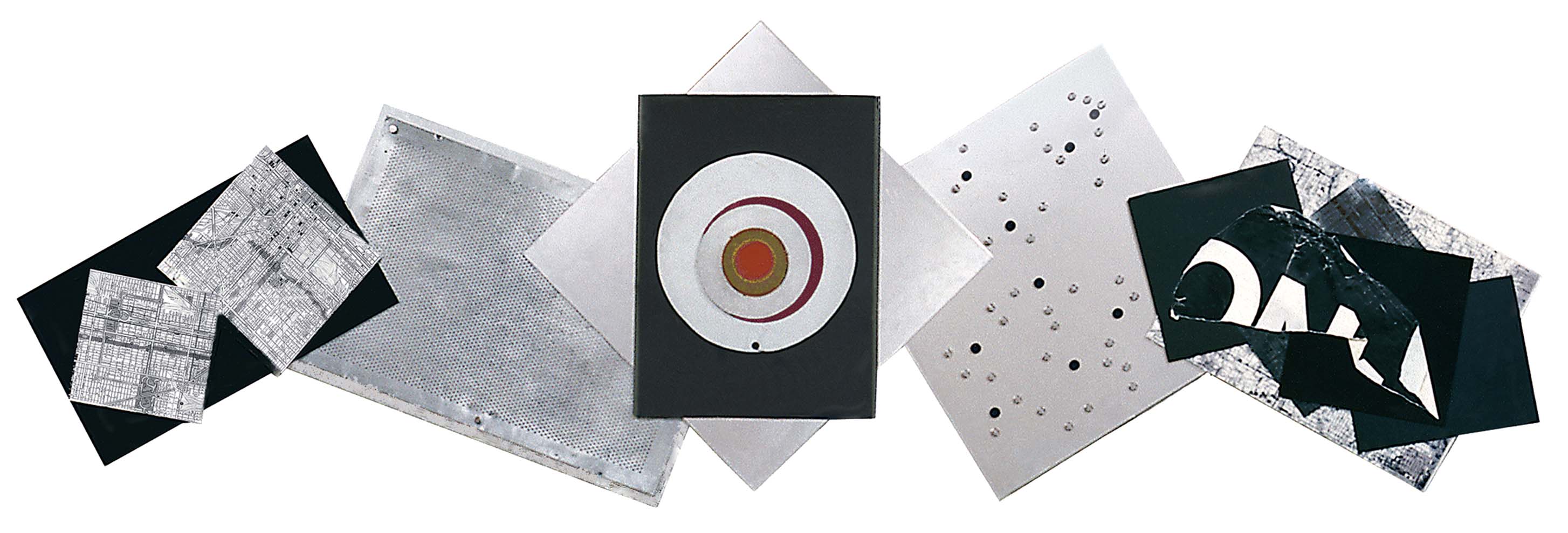
In the late nineties, I began pushing my use of diverse materials and media much beyond what had been my usual practice. Seriatim II, made in 1999, can serve as a fit example. It measures 34 1/4 x 94 1/2 inches and is made of paper, ink, perforated aluminum, stainless steel, sanding discs, black gesso on canvas, cardboard, mat board, and copier transparency film -- all mounted on five aluminum panels; also, the work juts out relieflike from the wall. Into what general category should such a work be placed? It is neither a collage nor a sculpture, nor a painting. Though elements from each of these art modes contribute to it as a whole, Seriatim II is something other. The same holds for many other works of mine made since then. Available category names (mixed-media, assemblage, combines) highlight basic operations. But mixing, assembling, combining, do not convey in any general sense how I arrive at such works, nor hint at what I consider a central necessity — the subordination of the parts to the integration of diverse modes and materials within a holistically coherent work of art.
The exhibition catalogue of the Kremen retrospective at the Nasher Museum of Art at Duke University listed all works together, this without regard to category differentiation except for sculpture and for two special series. The many other catalogues of previous exhibits focused almost exclusively on collage though a few treated sculpture separately.
My work has thus been publicly associated with collage and I’m generally thought of as being a “collagist.” That persists even though I have pushed the medium beyond conventional boundaries and, to such an extent, that today the term “collage” is no longer appropriate to much of what I make. This development began in the late eighties with the emergence within the body of my work of the various “Canto” series.
Those typically are composed of a main panel, largely monochromatic, followed a short space below by an irregular line of small collages and other material arranged rhythmically. I generally refer to the latter by the Italian term “predella” which applies to the small-scale, narrative panels or scenes along the frame at the bottom of an altarpiece. Mine are neither narrative nor representational but, rather, complement the main panel although they could well stand alone. After about a decade and a half, my predella forms developed into the “Seriata;” the materials of one of these I’ve described above. In my studio now some dozen works-in-progress are of the kind that synthesize either two or three of the modes (collage, painting, sculpture). They demand their own category name. I call them Multi-modes, notwithstanding that grey areas and ambiguities persist.
Irwin Kremen
-
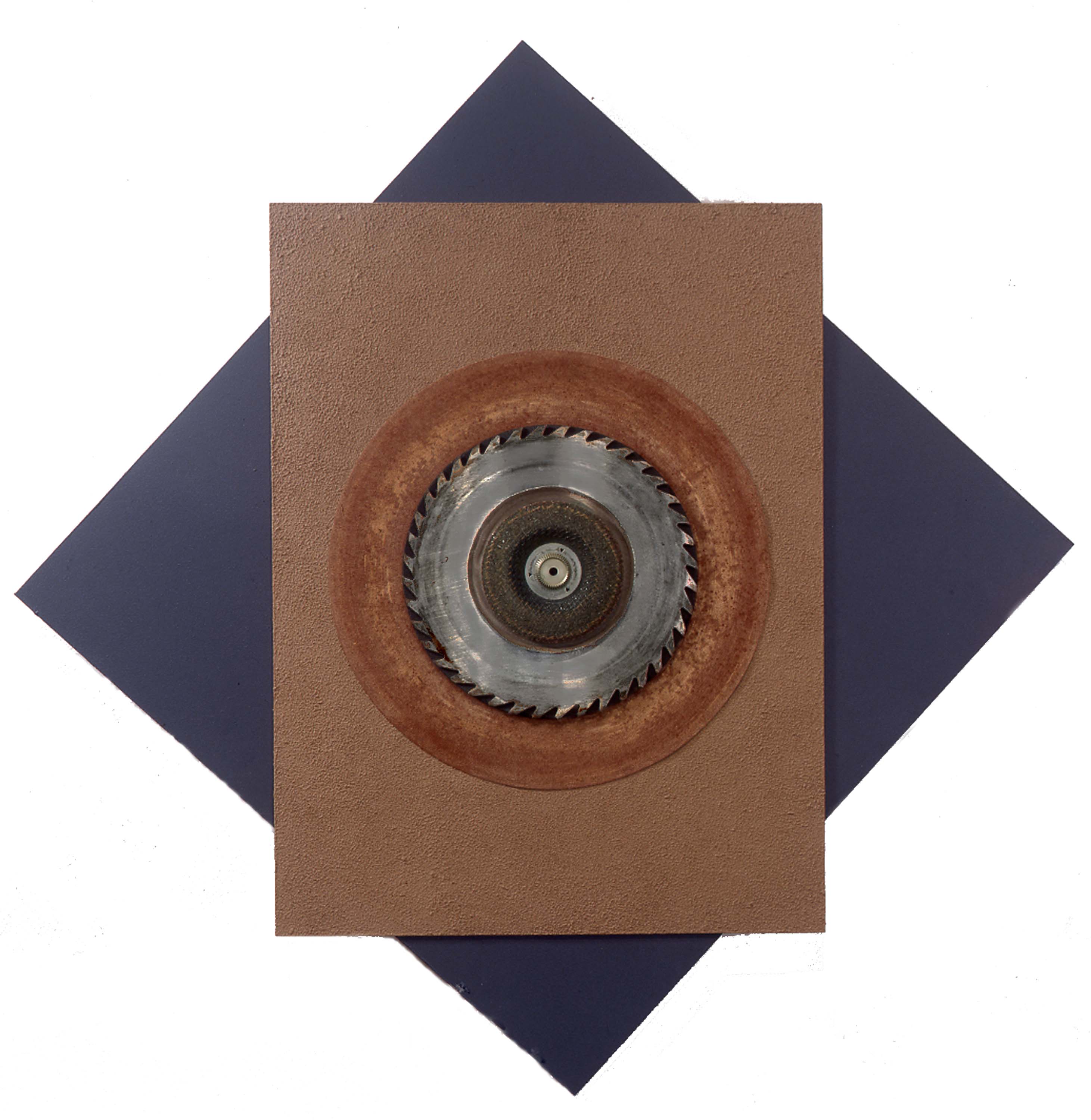
52-A, 1998/2003-04
acrylic on Dibond panels, abrasive cutting wheel,
circular saw blade, sanding and grinding discs,
aluminum gear, stainles steel mesh
29 x 29 in. -
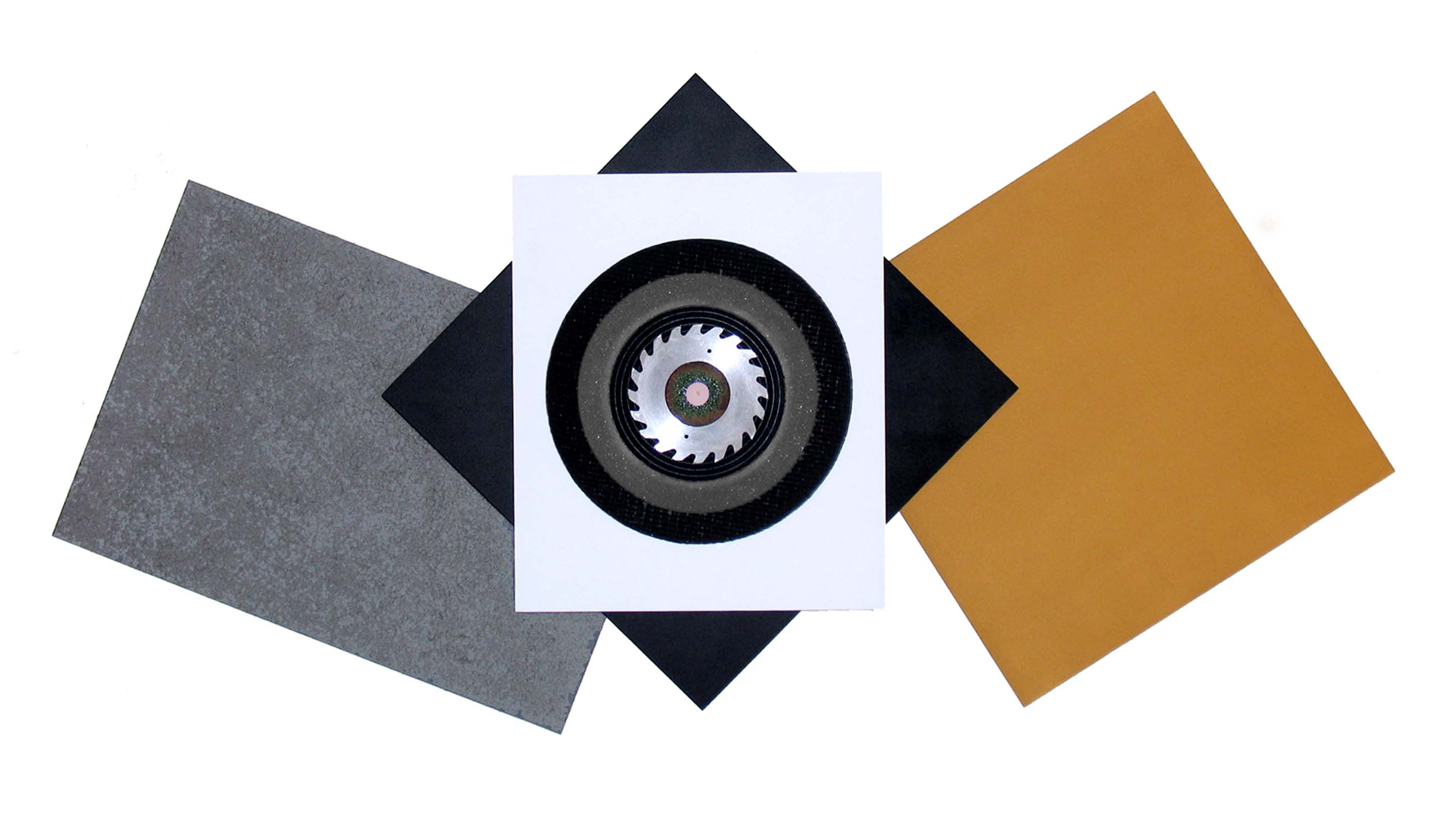
Seriatim IV, 2002-04
acrylic on Dibond panels, abrasive cutting wheels, circular saw blade, grinding disc, aluminum gear
30 1/8 x 61 5/16 in. -
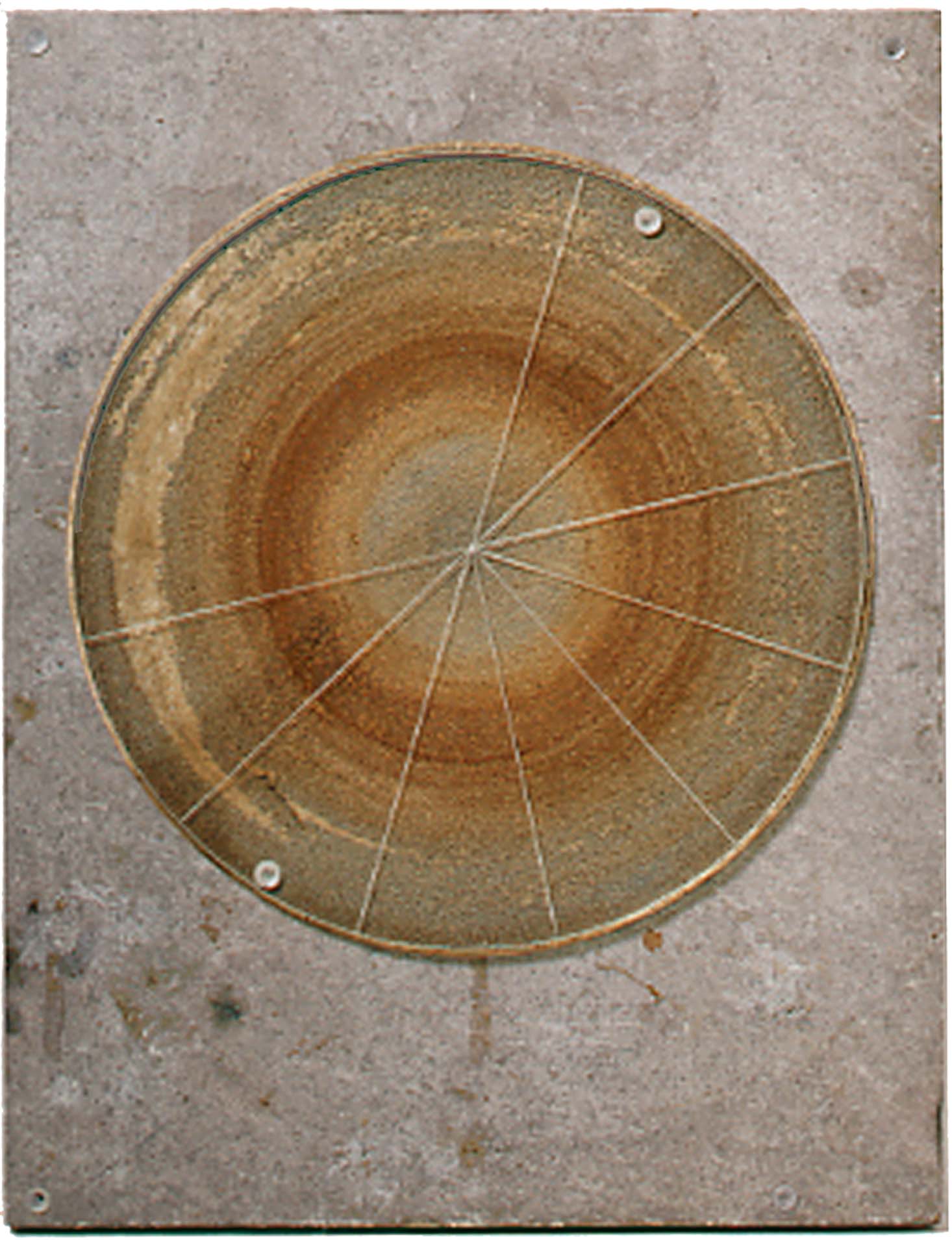
Centricities, 1969-70/80
sandpaper, transite, plexiglass and wood
18 x 14 in. -

Seriatim II, 1999 - 2000
paper, ink, perforated aluminum, stainless steel, sanding discs, cardboard, mat board, canvas and black gesso,
copier transparency film, on aluminum panels
30 1/4 x 94 1/2 in. -
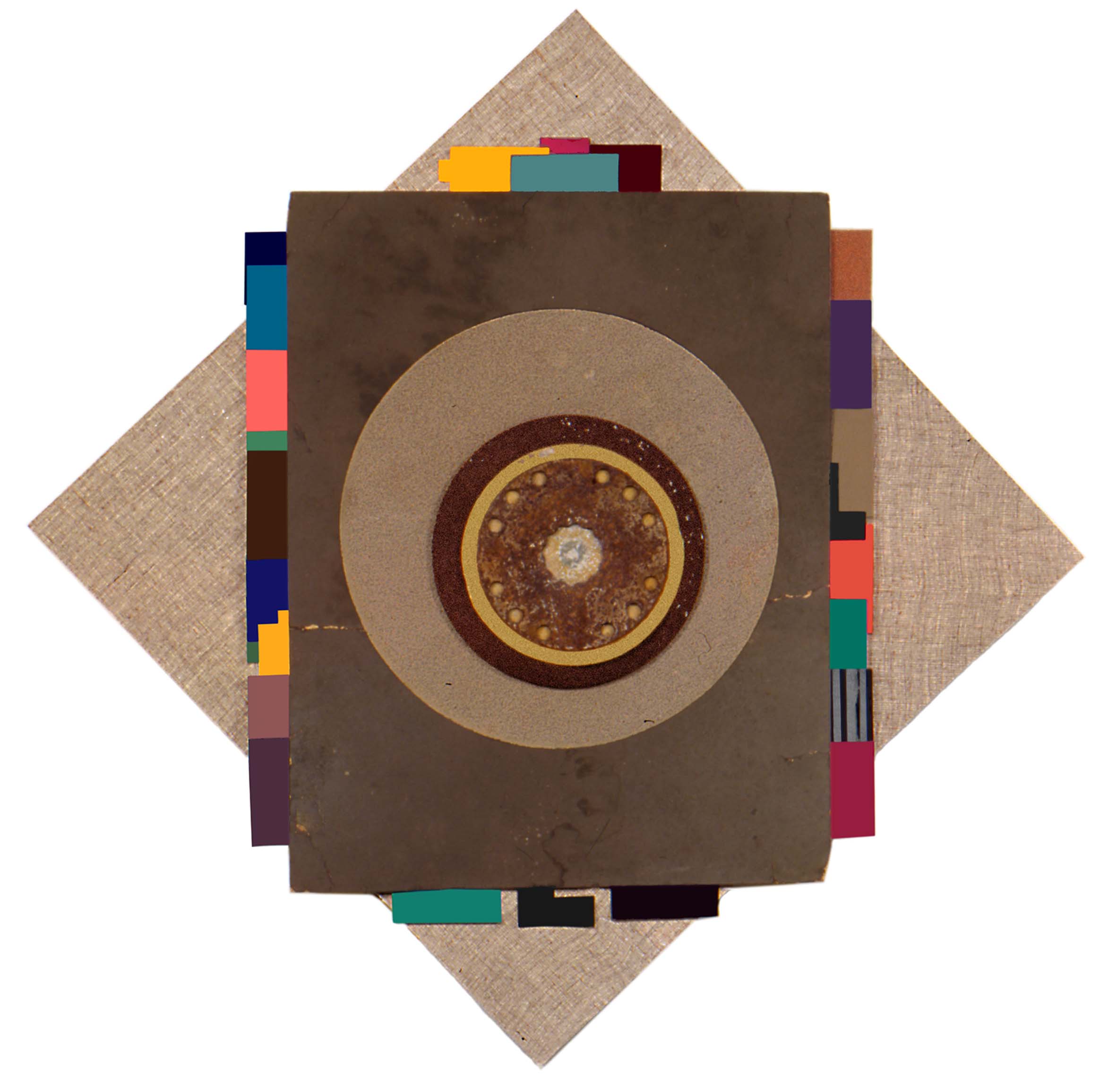
Seriatim III, 1999 - 2000
sandpaper, sanding discs, metal plate, cardboard,
paper, canvas on an aluminum panel
29 1/4 x 29 1/16 in. -

A Transform, 2001/03-04
aluminum panel, paper (changed to acrylic 2010) on Dibond, acrylic on a sanding disc, abrasive cutting wheels, circular blade, grinding disc and gear, steel bolts
20 1/2 x 20 1/2 in. -
2.jpg)
(C2) 2, 2001-02
acrylic on plywood, canvas and black acrylic gesso,
paint on sandpaper, grinding discs, aluminum
17 9/16 x 16 7/16 in -
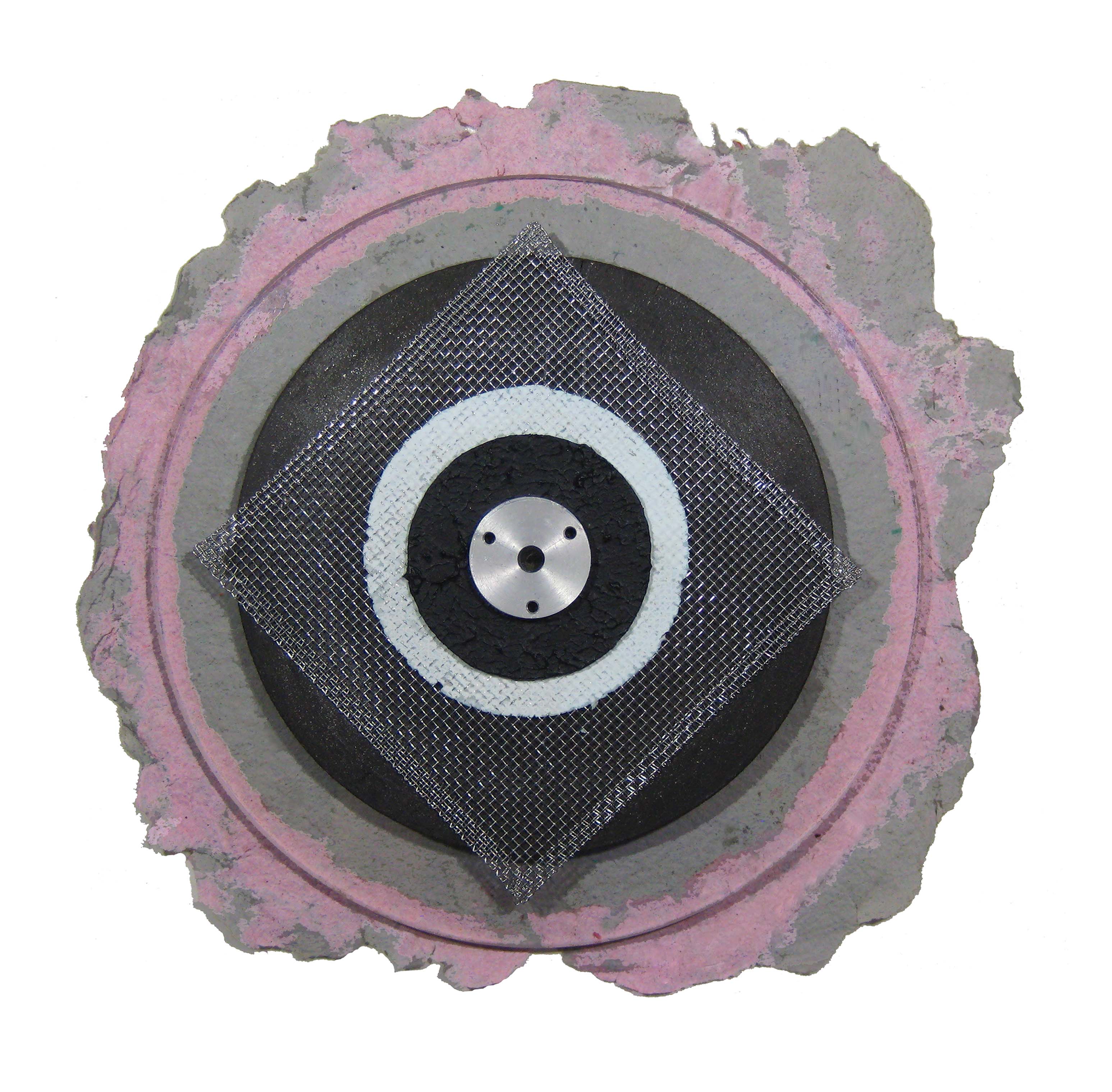
Over & Above, 2004-05/08
fragment of handmade paper by Kenneth Noland,
Plexiglass plate, abrasion disc, Bunsen burner pad,
acrylic on plastic, stainless steel
11 3/4 x 12 1/4 x 7/8 in. -
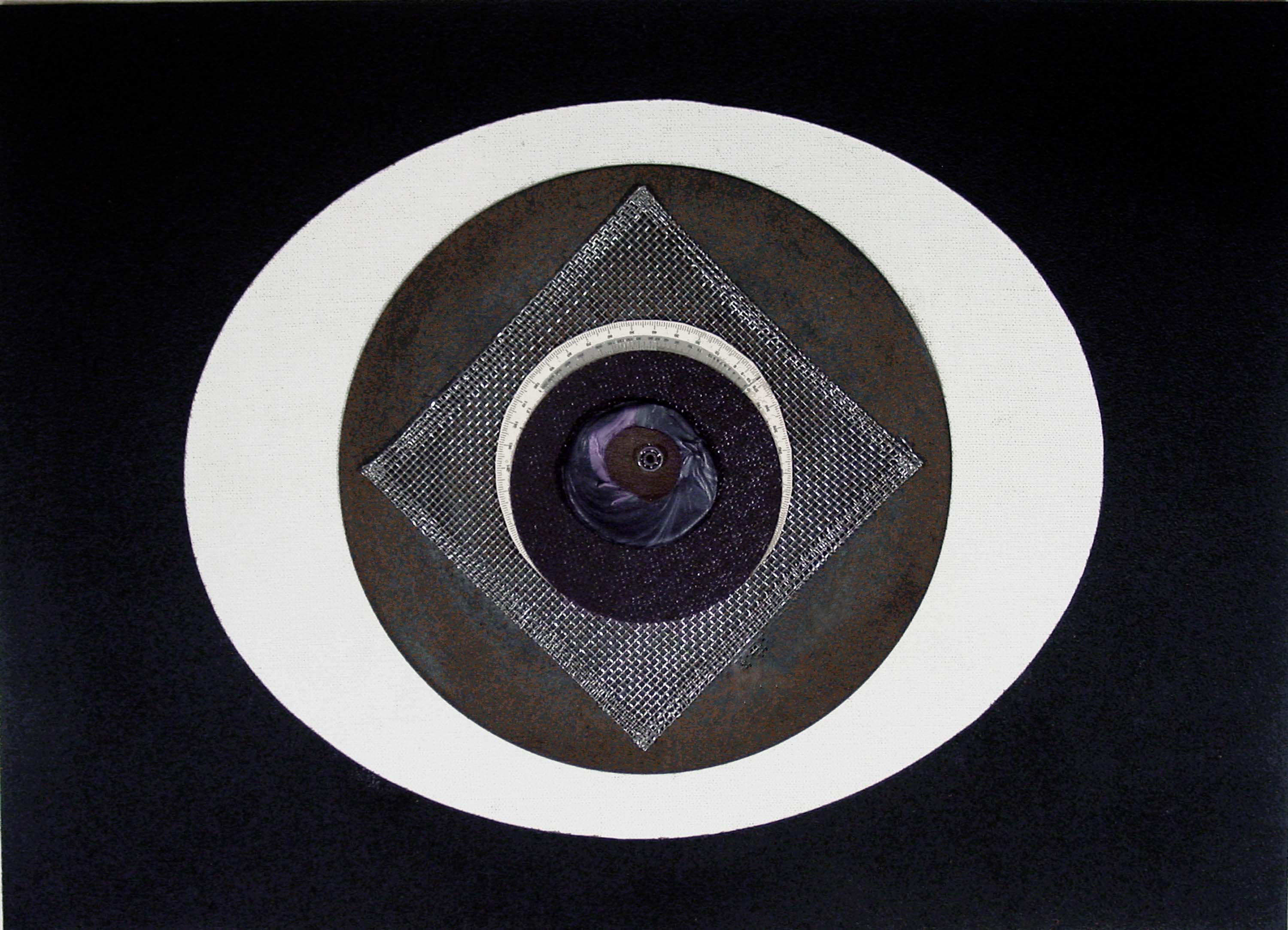
Discourse, 2007-08
acrylic on Dibond, canvas on bond, abrasion discs,
Bunsen burner pad, cardstock, congealed acrylic, leather,
ball bearing
14 1/4 x 19 7/8 in. -
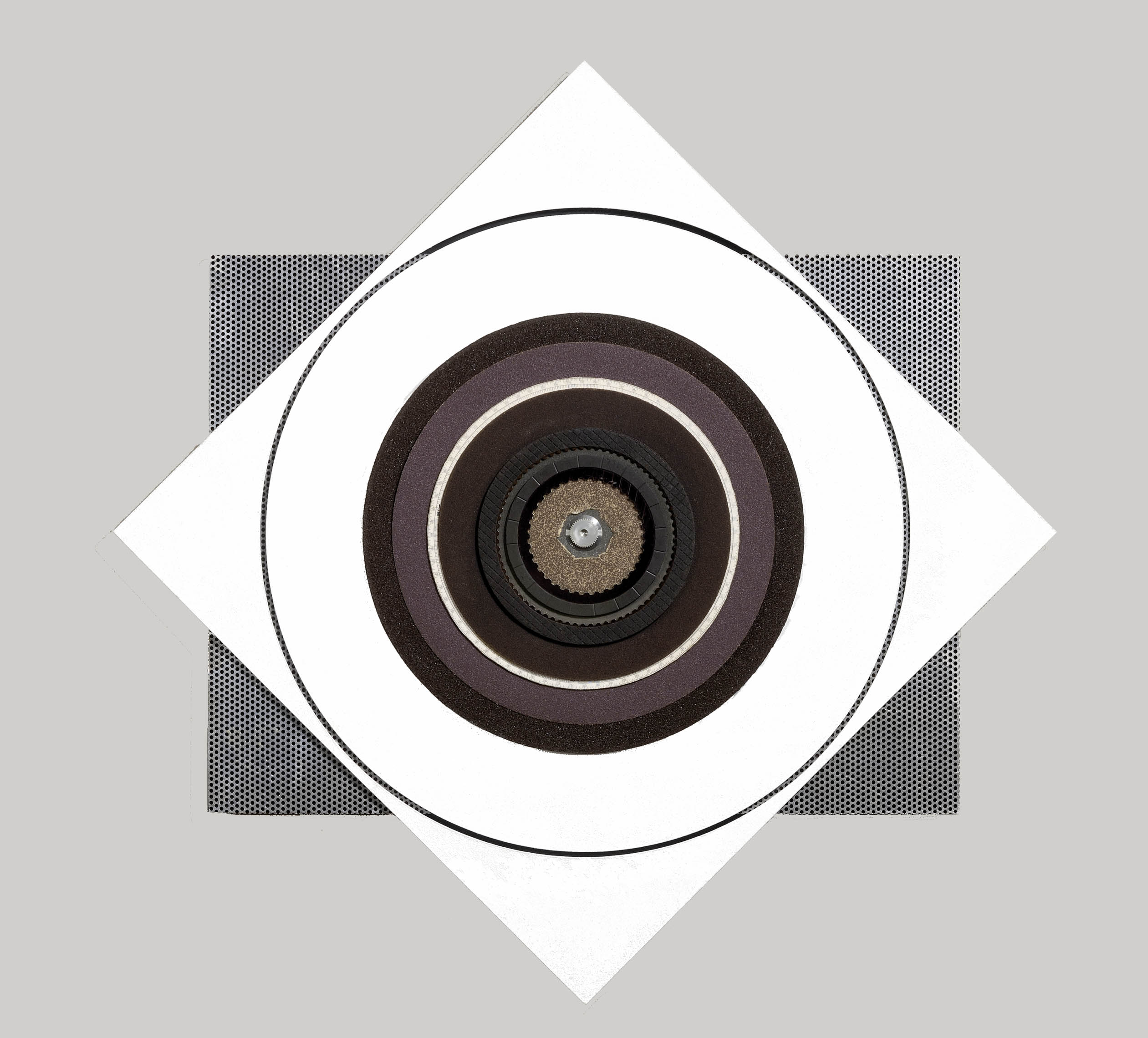
Altogether, 2003/05/07-08
perforated aluminum, acrylic on Dibond, mahogany, sanding discs, paper, clutch gears, sandpaper, stainless steel, aluminum gear, abrasive cutting wheel
29 ¾ x 29 ¾ in. -
Rust in Piece, 2002
saw blade, paper, acrylic on canvas, Xerox film, and wasp-nest material
9 3/8 x 9 in. (23.8 x 23.0 cm) -
You Name It, 2009-10
Chalkboard paint on Dibond, offset photo-negative metal, Bunsen burner pad, and acrylic museum board on paper
14 5/16 x 9 1/2 in.